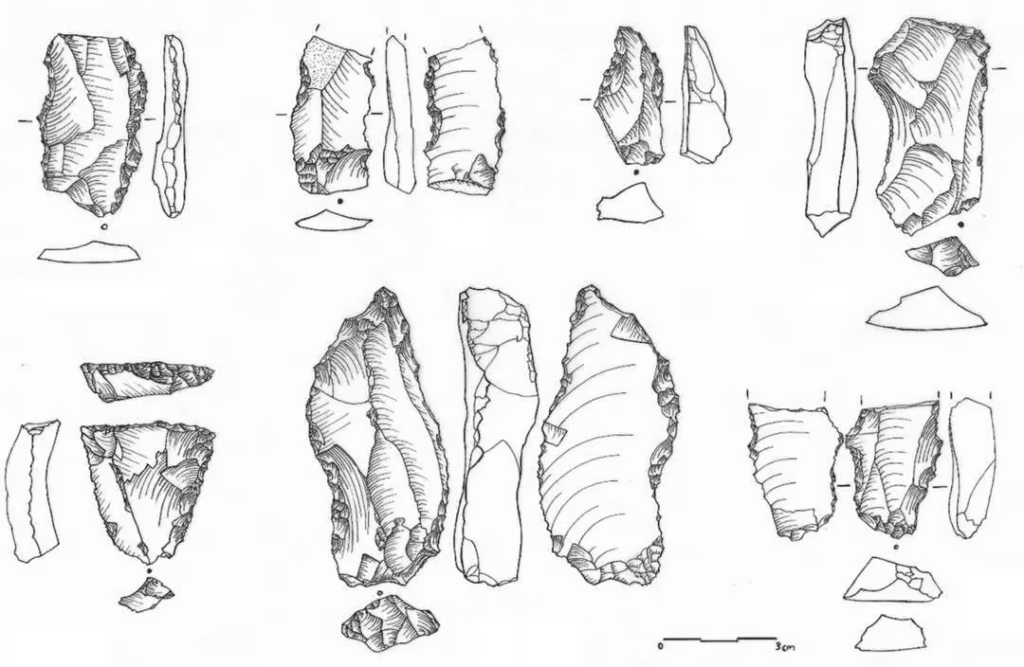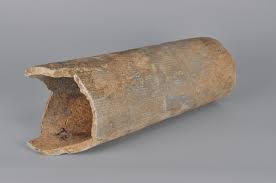Archaeologists have uncovered the oldest evidence of stone blade production in Southern Arabia, revealing an 80,000-year-old collection of stone blades that challenges previous assumptions about early human migration and technological evolution in the region. This groundbreaking discovery sheds light on the advanced cognitive abilities and adaptability of prehistoric populations who inhabited the Arabian Peninsula tens of thousands of years ago.
A Discovery That Rewrites History
The newly discovered stone blades—which were found in an archaeological site in Southern Arabia—represent the earliest known evidence of systematic blade production in the region. These finely crafted tools suggest that early human populations in the Arabian Peninsula were not only surviving but also thriving through innovative toolmaking techniques that were previously believed to have emerged much later.
Archaeologists believe these tools were made using a sophisticated flint-knapping technique, allowing early humans to create sharp-edged, durable blades that could be used for hunting, food preparation, and other survival tasks. The level of precision in the blade-making process indicates a high degree of skill and intelligence, demonstrating that early inhabitants of Southern Arabia were far more advanced than previously assumed.


Why This Discovery Is Significant
The discovery of 80,000-year-old stone blades in Southern Arabia is a game-changer in multiple ways:
- Earliest Evidence of Blademaking in Arabia – Prior to this discovery, archaeologists believed that systematic stone blade production in the region began much later. These findings suggest that early humans in Arabia were more technologically advanced than previously thought.
- New Insights Into Early Human Migration – The presence of these tools provides compelling evidence that early human populations moved across Arabia much earlier than assumed, possibly linking to migrations out of Africa.
- Advanced Skills and Cognitive Development – The complexity of the blade production suggests that these early humans possessed advanced problem-solving skills, planning abilities, and adaptability, demonstrating a cognitive sophistication that parallels other early civilizations.
The Art of Prehistoric Blade-Making
The stone blades were crafted using a technique known as Levallois flaking, a method associated with early Homo sapiens and Neanderthals. This process required careful planning, precision strikes, and an understanding of material properties, indicating a high level of intelligence and craftsmanship.

To make these blades, early humans:
- Selected the right type of stone, such as flint or chert, known for its sharp edges and durability.
- Prepared the stone core, shaping it in a way that allowed controlled removal of blades.
- Struck the core with precision, detaching thin, sharp blades that could be used immediately or further refined.
The result was a collection of lightweight, easily replaceable tools, making them more efficient than older, heavier stone tools.
Implications for Human Migration and Evolution
For decades, scientists have debated how and when early humans first expanded into Arabia. These newly discovered stone blades provide direct evidence of human presence in Southern Arabia 80,000 years ago, pushing back previous estimates and supporting the theory that early populations used Arabia as a corridor for migration from Africa into Asia.
- The Arabian Peninsula as a Migration Hub – The discovery supports the idea that early humans moved through Arabia in waves, settling in different regions over time.
- Climate Adaptability – Southern Arabia was once a greener, more hospitable environment, allowing human populations to sustain themselves using advanced tools and resources.
- Cultural and Technological Exchange – The similarity of these tools to those found in Africa and parts of Asia suggests possible connections between early human groups, hinting at cultural exchanges and shared knowledge.
What’s Next? Future Research and Excavations
This discovery has opened new doors for archaeologists and anthropologists, encouraging further exploration of prehistoric settlements in Arabia. Researchers are now:
- Conducting deeper excavations to uncover more artifacts and learn about the daily lives of these early humans.
- Using advanced dating techniques to confirm the exact age of the stone blades and associated remains.
- Studying the environment and climate conditions during that period to understand how early humans adapted to their surroundings.
A Landmark Discovery in Human History
The unearthing of 80,000-year-old stone blades in Southern Arabia is a monumental breakthrough in the study of early human civilizations. It challenges existing narratives, confirms the region’s importance in prehistoric migrations, and highlights the ingenuity of our ancient ancestors. As researchers continue to dig deeper into Arabia’s past, we may soon uncover even more evidence of the remarkable intelligence and resilience of early human populations.
Do follow Uae stories for more Updates
Dubai Stadium Implements Strict Spectator Rules for Champions Trophy 2025














